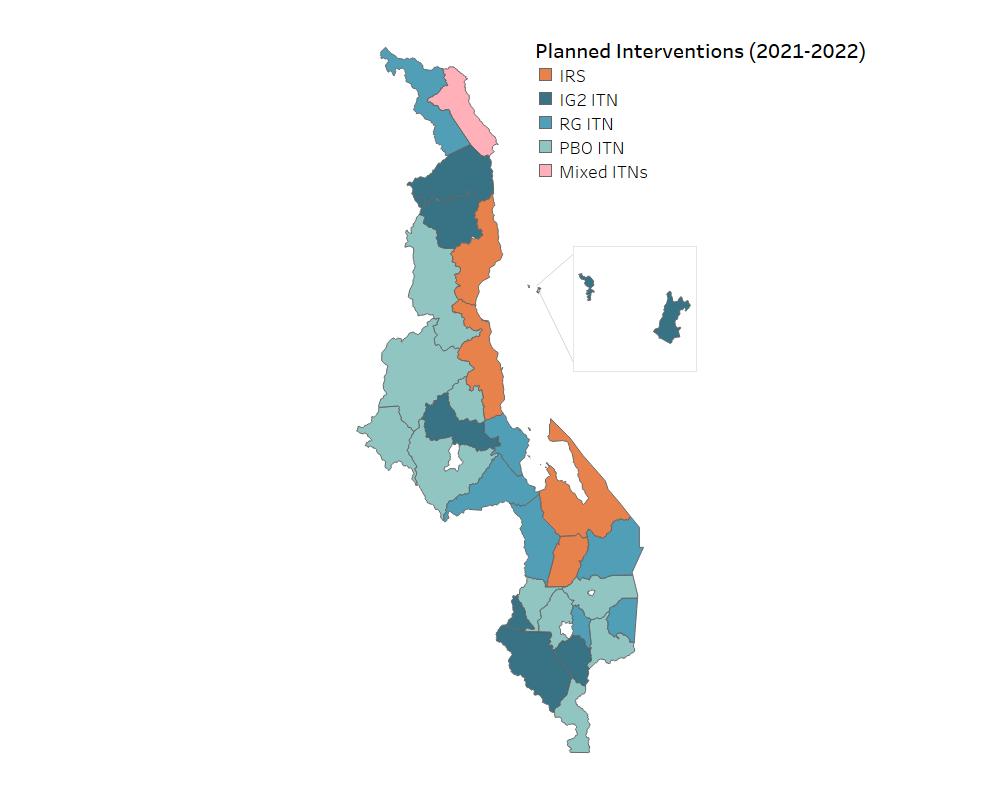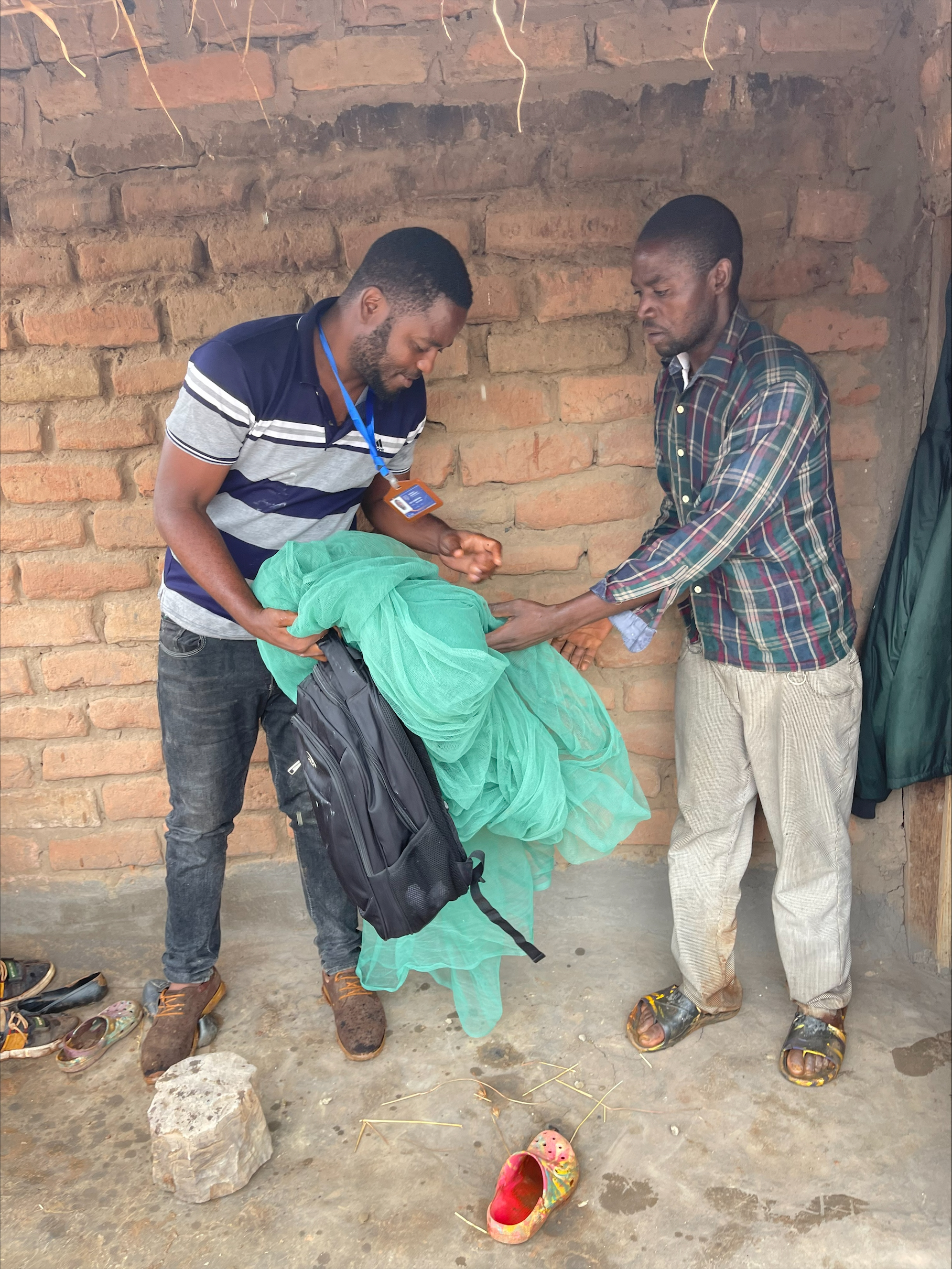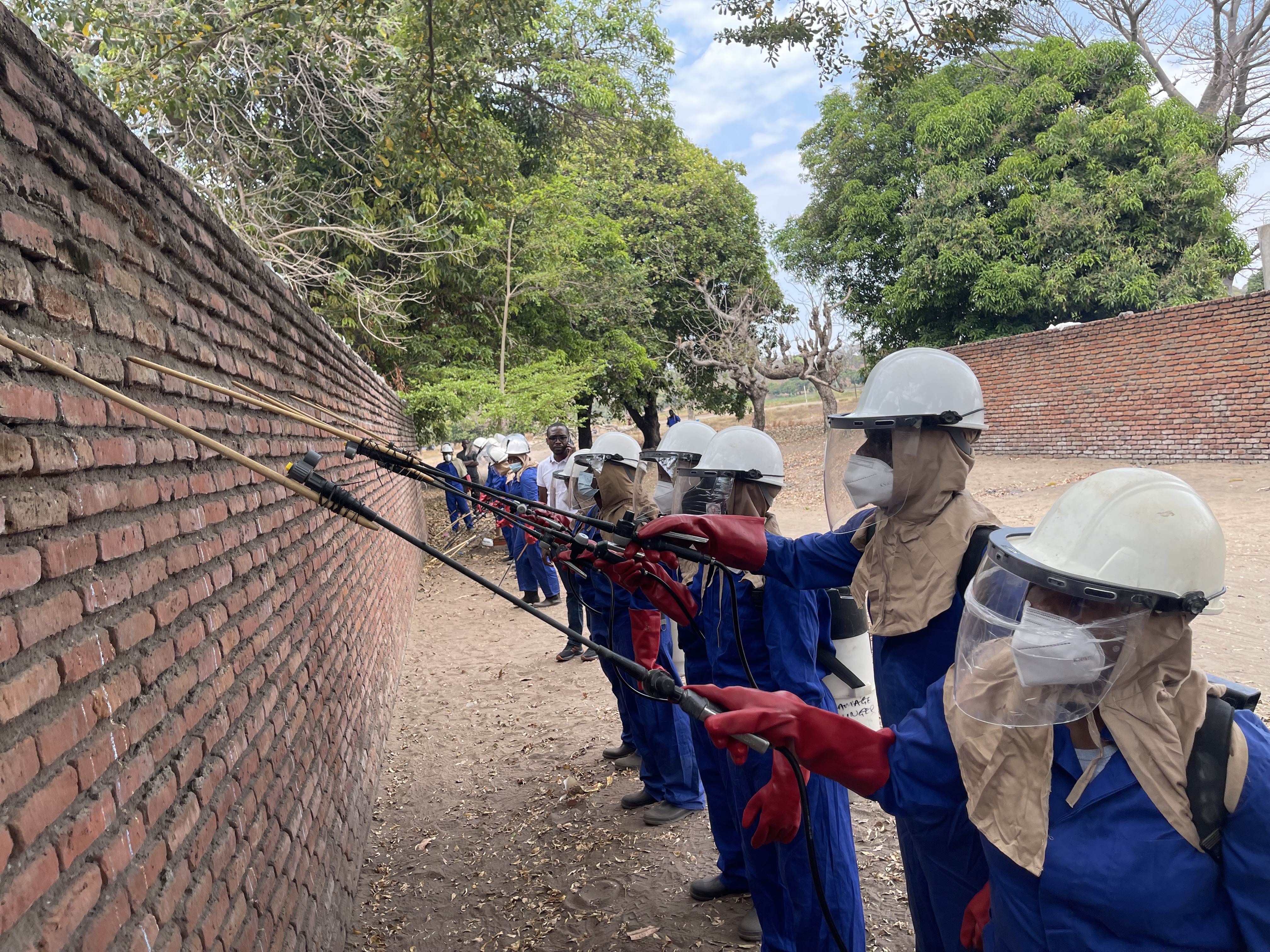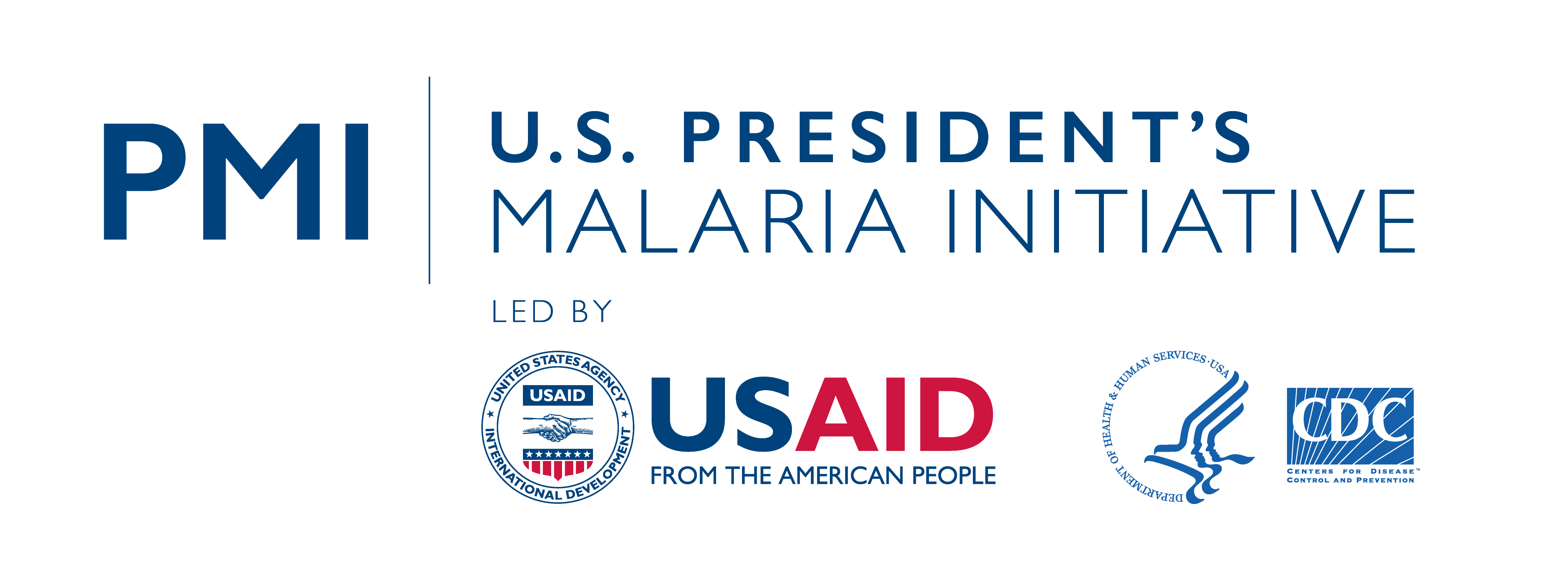“All this is being done to make sure that we control malaria in Malawi.” – Austin Gumbo, Head of Monitoring and Evaluation, National Malaria Control Program Malawi
Indoor residual spraying (IRS) and insecticide-treated bed nets (ITNs) are key vector control interventions implemented in Malawi to mitigate malaria transmission. The Malawi National Malaria Control Program (NMCP) has used data to support targeting of vector control interventions since 2018, when IRS was re-introduced in one high burden district – Nkhotakota – and piperonyl butoxide (PBO) and standard pyrethroid ITNs were targeted based on data showing malaria-transmitting mosquitoes’ resistance to pyrethroids. To continue to address the threat of insecticide resistance, the NMCP planned the 2021 ITN mass campaign to take advantage of new dual-active ingredient ITNs – Interceptor G2 (IG2) ITNs and Royal Guard (RG) ITNs – while continuing to use PBO ITNs and IRS in select districts (see distribution map below). While the additional impact of these ITNs had been demonstrated in randomized control trials, the NMCP was interested in understanding how these new products worked in Malawi.
“We wanted to look at the districts that are implementing the different interventions and see if there is any impact of these interventions and compare the IRS and new ITNs,” said Austin Gumbo, Head of Monitoring and Evaluation for the NMCP.

The U.S. President’s Malaria Initiative (PMI), through the PMI VectorLink Project, partnered with the NMCP to evaluate the impact of the ITN and IRS campaigns on malaria case incidence, using the NMCP’s routine health system and entomological surveillance data. The evaluation was designed to directly address the NMCP’s most pressing questions and guide future vector control product selection. The key questions of interest were:
- What is the impact of IRS compared to the impact of any new ITN (PBO, IG2, and RG)?
- What is the impact of PBO ITNs compared to the impact of the dual-active ingredient ITNs (IG2 and RG)?
- What is the impact of IG2 ITNs compared to the impact of RG ITNs?
Less than one year after the ITN mass campaign took place, the NMCP was already working on their Global Fund application for the next funding cycle, the New Funding Model 4. They needed timely information on the initial impact of these new products to guide future procurement. The PMI VectorLink project rapidly conducted an interim analysis assessing the first six months after the ITN distribution demonstrating:
- The effect of IRS (received between 2018-2021) was not significantly different from the combined effect of PBO, IG2, and RG ITNs during their first six months of use (45.5% vs 42.2% reported malaria case reduction).
- The effect of PBO nets was not significantly different from the effect of both dual-active ingredient ITNs (33.4% vs 37.3% reported malaria case reduction).
- The IG2 ITNs, however, performed better than the RG ITNs with statistical significance (57.4% vs 39.7% reported malaria case reduction).
Having these interim results available allowed the national program to use locally generated data to justify the NMCP’s proposed vector control approach in the Global Fund application. “In order to maximize the impact of its [the Global Fund] allocation and achieve optimization and value for money while managing insecticide resistance in Malawi, we decided to withdraw IRS in specific districts and instead include them in the 2024 ITN mass campaign,” Gumbo said. “The decision to procure IG2 ITNs was made using the evaluation.”
PMI’s Malaria Program Management Specialist in Malawi, Pius Masache agreed: “Based on the results and what we’re seeing – that new nets are comparable to IRS, but IRS is more expensive – the country has moved to distributing [new nets] country-wide. This [evaluation] was one of the primary data sources we used to guide that decision.”

Photo Credit: Abdoulaye Bangoura, PMI VectorLink Malawi
In addition to providing rigorous quantitative findings, this evaluation also demonstrated how locally collected data is important to guide national decisions. Gumbo described how use of routine data is a cost-effective approach with real-world applicability; Masache added that use of routine data in evaluations demonstrates value to the collection process itself: “People say, ‘We collect this data every day, but what do you use it for?’ [Using routine data] helps to add value to the team that is collecting and consolidating all this data so that they know that their work is being appreciated and they know the relevance of their work.”

Photo Credit: Abdoulaye Bangoura, PMI VectorLink
Looking ahead, this ongoing evaluation will continue to provide important information on the impact of these new ITNs over their expected lifespan, with final results in 2024. Of key interest to the NMCP moving forward is analyzing how well the new ITNs perform over time. “Since it’s the first time Malawi implemented IG2 ITNs and the assessment was done after the first six months, we will need more information on this over time after one, two, and three years, and more on how IG2 ITNs compare to Royal Guard ITNs.” said Gumbo. “And we are looking forward to the results.”
Read this story in French: Exploiter les données de routine pour optimiser le ciblage des nouvelles interventions de lutte contre les vecteurs
Download a PDF version of this story in English: Leveraging Routine Data to Drive Targeting of New Vector Control Interventions in Malawi

